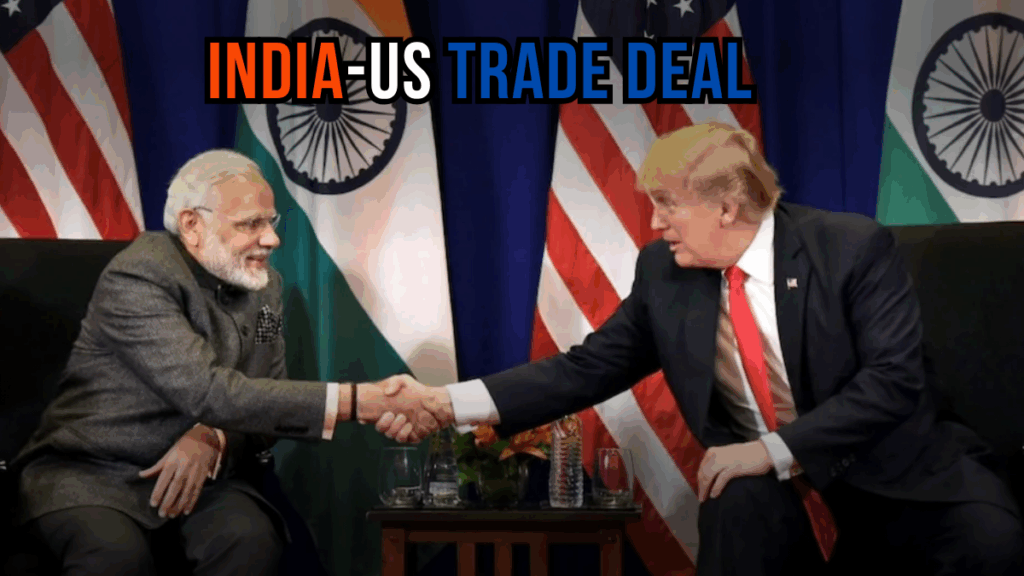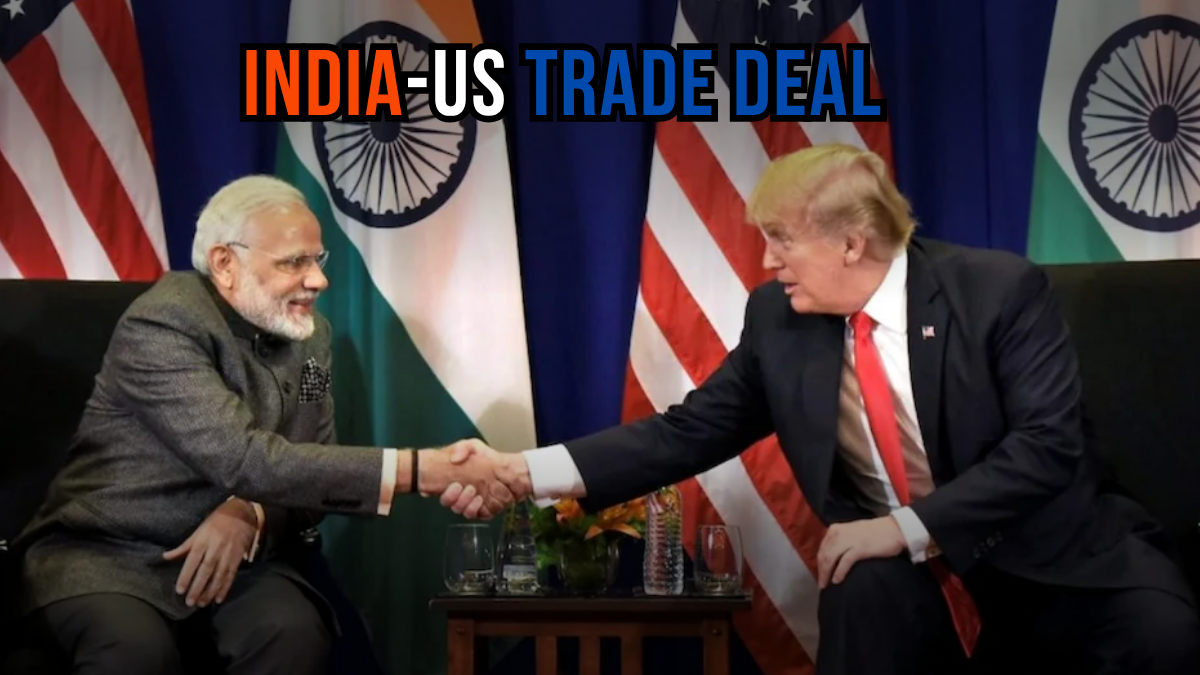President Donald Trump’s recent announcement that the US is “close to making a deal with India” has sent ripples through international trade circles. While other nations face steep tariffs effective August 1, 2025, India appears to have secured breathing room in ongoing negotiations. But what exactly is on the table, and why does this matter for both economies?

The Current Trade Landscape
The US-India trade relationship has reached a critical juncture. With bilateral goods trade valued at $131.84 billion in 2024-25, the US has been India’s largest trading partner since 2021-22. This partnership represents more than just numbers it’s a strategic alliance that could reshape global commerce.
Trump’s approach has been characteristically direct. After announcing reciprocal tariffs of 26% on Indian goods in April 2025, he later reduced this to 10% and granted a 90-day suspension period. Now, with that deadline approaching, both countries are racing to finalize what’s being called a “mini trade deal.”
What’s Included in the Negotiations
The proposed agreement focuses on several key areas that could benefit both nations:
Manufacturing and Industrial Goods
The deal is expected to reduce or eliminate duties on certain US industrial goods entering India. This would create new opportunities for American manufacturers while potentially providing Indian companies with access to advanced industrial equipment at lower costs.
Labor-Intensive Sectors
India is pushing for meaningful tariff concessions on its labor-intensive exports, including textiles, garments, leather products, and footwear. These sectors employ millions of Indians and represent significant export potential.
Technology and Innovation
Both countries are exploring ways to enhance cooperation in technology transfer and innovation, though specific details remain under wraps.
The Sticking Points
Not everything is moving smoothly. Agriculture and dairy products traditional sources of tension are likely to remain outside this initial agreement. New Delhi has historically kept these sectors out of Free Trade Agreements to protect its farmers and ensure food security.
The US has been pressing for greater market access to India’s agricultural and dairy sectors, along with acceptance of genetically modified crops. However, India’s concerns about rural livelihoods and food safety have made these areas non-negotiable for now.
Commerce Minister Piyush Goyal made India’s position clear: “India does not enter into any trade agreement based on deadlines. We will sign a deal with the US only when it is fully finalised, properly concluded, and in the national interest.”
Why This Matters for Businesses
For companies operating in both markets, this deal could unlock significant opportunities:
American Businesses would gain easier access to one of the world’s largest consumer markets, with reduced tariffs making their products more competitive in India.
Indian Exporters could see substantial benefits in labor-intensive sectors, potentially creating thousands of new jobs and boosting export revenues.
Supply Chain Optimization could become more efficient as reduced trade barriers allow companies to source materials and components more cost-effectively.
Economic Implications
The broader economic impact extends beyond immediate trade benefits. Export organizations like the Federation of Indian Export Organisations (FIEO) view the extended negotiations as crucial for addressing contentious issues while maintaining India’s comparative advantage.
“This deferment reflects the US’s readiness to talk and helps our negotiators address the remaining contentious issues,” said FIEO Director General Ajay Sahai.
The deal also represents a strategic shift in global trade dynamics. As the US seeks to diversify its trade relationships, India presents an attractive alternative to other markets, offering both scale and growth potential.
Looking Ahead
The extended suspension of tariffs until August 1 provides both countries with additional time to resolve outstanding issues. However, the window remains narrow, and negotiators face pressure to deliver results.
Trump’s acknowledgment that the US is “close to making a deal with India” suggests optimism, but his caveat that “some will maybe adjust a little bit depending if they have a cause” indicates flexibility in implementation.
For businesses and investors, the key will be monitoring how quickly both sides can bridge their differences on sectors like agriculture while maximizing benefits in areas where agreement seems more achievable.
The Path Forward
As negotiations continue, both countries appear committed to finding common ground. The focus on reciprocal tariff reductions rather than comprehensive sectoral agreements suggests a pragmatic approach that could yield results more quickly.
The success of this mini trade deal could set the stage for more comprehensive agreements in the future. With both nations targeting doubled bilateral trade to $500 billion by 2030, the stakes couldn’t be higher.
For now, businesses on both sides of the Pacific are watching closely as negotiators work against the clock to finalize an agreement that could reshape one of the world’s most important trade relationships.
The coming weeks will be crucial in determining whether Trump’s optimism translates into concrete results or whether both countries will need to reassess their approach to this critical economic partnership.
Frequently Asked Questions (FAQs)
Q. What is the current status of the India-US trade deal?
A. President Trump has expressed optimism, suggesting that the US is close to finalizing a trade deal with India. However, concrete details have yet to be announced, and negotiations are ongoing.
Q. Why are tariffs a central issue in the talks?
A. Tariffs have been a significant point of contention in the India-US trade relationship. The US has raised concerns about high import duties imposed by India, while India has responded to US tariff increases on its products.
Q. What sectors are most affected by these trade negotiations?
A. Key sectors impacted include agriculture, technology, pharmaceuticals, and manufacturing. Both nations aim to address barriers that hinder bilateral trade in these industries.
Q. How could a trade deal benefit India and the US?
A. A successful trade deal could boost economic opportunities for both countries, expand market access, and strengthen the overall economic ties between the two nations.
Q. What is the timeline for finalizing the deal?
A. While no official timeline has been provided, the “coming weeks” have been described as critical for advancing negotiations and potentially reaching an agreement.
For More Information CLICK





